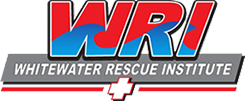New Technologies for Inland Spill Response
At WRI we specialize in fastwater spill response and inland oil spill response. Our goals are always to respond safely and effectively. We want to contain the spill as quickly as possible and then take steps to minimize its impact. Over the past few years we have been experimenting with a variety of techniques and spill response technologies to increase our effectiveness.
Fast water boom deployment is usually labor intensive and strenuous. Carrying 50 and 100 foot lengths of containment boom to spills or training site takes time and teamwork. Loading and unloading boom out of response trailers over uneven ground and carrying it to the river is some of the most strenuous work we do as responders.

Deploying boom in moving water involves additional risks and challenges. At WRI we train constantly to learn what works and what doesn’t. Each time we deploy boom in a new location it’s a careful experiment that requires risk management and teamwork.
Last week we drilled in two different locations on the Clark Fork River in fastwater. Our first deployment focused on boom vane collection in very fast current on the upper Clark Fork. On the second deployment we were introduced to some new boom developed by Harbo Technologies. At first glance this boom was very appealing because it looked to be light weight and easy to deploy. I was skeptical how effective it would be in moving water and assumed it’s lightweight design would not be strong enough to hold up in a fastwater deployment. HARBO representatives were on site to answer questions and explain the boom design.
HARBO boom is stored in relatively lightweight containers that are easy to carry and transport into position. Approximately 80 feet of boom is stored in a 20” by 36” dry box. The Harbo boom deploys quickly due to it’s compact nature and light weight. One person can easily line out 82 to 164 feet of boom along the shoreline. The boom deploys flat and compact until it is immersed in the water when a series of interior sponges inflate the boom into a square structure with a float and curtain. Nylon webbing runs the length of the boom providing strength for towing. Water flows through the hollow structure of the boom strengthening it in current and adding stability to the curtain. Connecting plates are simple universal connectors with a single pin.
We deployed the HARBO boom (SEE VIDEO) as shoreline protection and as a collection strategy with a Highline and with a Boom Vane. To our surprise the lightweight boom performed well and appeared to be just as effective as the normal heavier 12” containment boom we traditionally use. In short, we were impressed. There was no entrainment in the deployment. All of the WRI staff on site have worked extensively with boom in trainings and on spills. As responders we really appreciated the light weight and ease of deployment of the Harbo boom. We were surprised by both its strength and effectiveness. This product would be a versatile and effective tool for a variety of spill response situations including, containment, deflection, collection and shoreline protection. Facilities such as harbors, refineries and rail yards could dramatically improve deployment response times because it is so easy to stage and deploy with minimal numbers of personnel.
Currently HARBO is a one time use product. For now the sponges do not adequately support the structure of the boom after they have been used once and dried. This makes it an expensive product to train with. HARBO staff said they were currently developing a training version of the boom that would address this. Secondly, the boom has a five year shelf life before it would need to be replaced.
In summary, we were impressed at the ease, simplicity, versatility and effectiveness of the Harbo boom. As responders we are excited about having a new tool that is lightweight and will increase our response speed and effectiveness. We plan to utilize it for our spill responses and will be interested to see how utilized it will be in the spill response industry.
“Whether you are a river-rookie or an experienced boater, WRI tailors their classes to what you need to learn in a fun and challenging environment. Their scenario based teaching approach creates an electric learning atmosphere where you feel like you are in actual river rescue situations. I would recommend them to anybody!”
